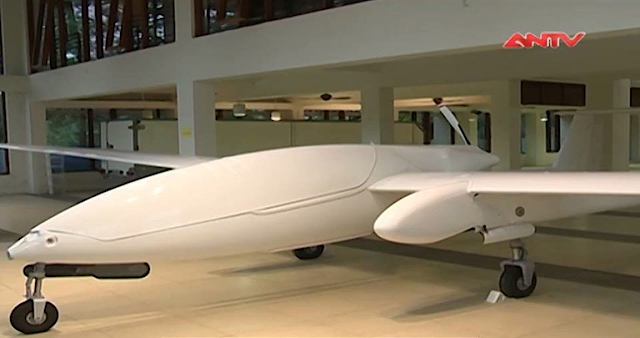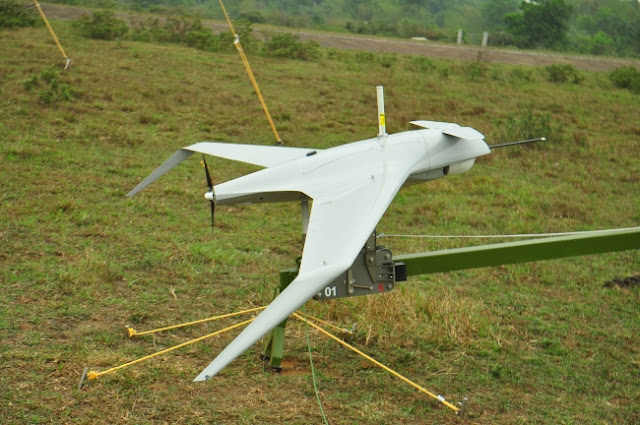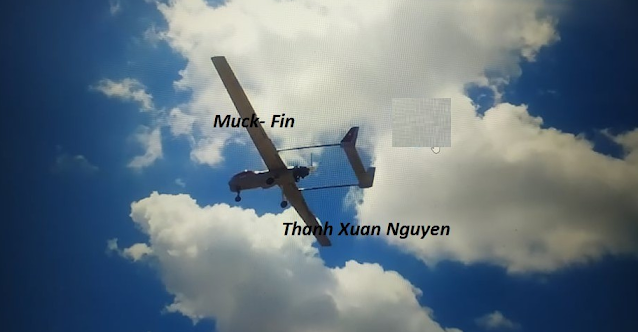By Stijn Mitzer and Joost Oliemans
Vietnam has sought to address its security requirements by fielding a large military apparatus equipped with mostly Soviet-era weaponry that can be quickly reinforced by a massive reserve force armed with anything from World War II-era Soviet rifles to U.S. Main Battle Tanks dating from the 1960s. Modern equipment is relatively lacking in the inventory of the Vietnamese People's Army (VPA), with Vietnam instead preferring to upgrade existing weaponry to keep it combat effective in the 21st century. A prime example of this is the T-54M3 tank upgrade project.
This unique approach has meant that equipment types commonly found in armies the size of Vietnam are either lacking or acquired relatively late. Over the last decade, Vietnam has directed most of its funds towards the modernisation and expansion of its air defences, coastal defence systems (CDS), and navy to improve its deterrent capabilities against an increasingly assertive China in the South China Sea. In this light, the acquisition of unmanned combat aerial vehicles (UCAVs) is almost certainly not Vietnam's top priority.
However, when approached from a different perspective, a convincing case for the introduction of affordable UCAVs by Vietnam can be made. The Vietnam People's Air Force (VPAF) features little in the way of dedicated ground-attack aircraft, and any future conflict with China would see its fleet of Su-27s and Su-30s battling it out with a numerical superior fleet of Chinese jet aircraft. This leaves little assets available for providing close air support to ground forces, with the last of Vietnam's Mi-24A attack helicopters decommissioned in the late 2000s without a replacement.
Concrete signs that Vietnam could move forward with the introduction of an unmanned strike capability first surfaced in September 2020, when a UCAV design with a twin boom configuration was seen during an exhibition in honour of the 11th Party Congress of VPA. [1] The UCAV, believed to have been designed by the Viettel Group that has been responsible for most of Vietnam's UAV designs, featured two air-to-ground missile (AGM) mock-ups under its wings. Little else is known about the drone, except that it already conducted its first successful test flight. [2]
Although still in the early prototype stage, the fuselage of the design bears a resemblance to the Anka UCAV by Turkish Aerospace Industries (TAI). Of course, such a resemblance is likely purely accidential, with no military cooperation with Turkey known to be taking place. An interesting addition to the design is a large hump for a satellite communications (SATCOM) antenna and what appears to be a bulge for a synthetic aperture radar (SAR) under the fuselage, indicating that the UCAV is designed to undertake intelligence, surveillance and reconnaissance (ISR) duties.
The new UCAV is not the first large UAV design to have come out of
Vietnam. In 2015, the country unveiled its largest UAV design till thus
far. [3] [4] This 22 metre-wingspan MALE UAV, designated as HS-6L, is believed
to have been jointly developed with Belarus. Although the (unarmed) design
was supposed to undergo flight testing in 2016, nothing has been heard
of the project since its revealing in 2015. The HSL-6 was claimed to have a range of some 4,000 kilometers and a 35-hour endurance, making it ideally suited for patrolling large swaths of the South
Chinese Sea. [3]
An interest in designing a domestic MALE UAV appears to have been replaced by a preference for the acquisition of a foreign design. In June 2018 it was announced that two Israeli companies, Aeronautics and Israeli Aerospace Industries, were offering their types to meet a Vietnamese requirement for a large UAV. [5] Then in December 2018 it was reported that Vietnam had struck a 160 million USD deal for the purchase of three IAI Herons. [6] This deal ultimately failed to materialise, suggesting some hesitation on the side of Vietnam to invest in a MALE UAV capability.
 |
The HS-6L jointly designed by Vietnam’s Academy of Science and Belarus. |
 |
The VT-Swift, a licence-produced variant of the Israeli Orbiter-3. |
As Vietnam continues to address its defence needs in its own unique way, it could one day, perhaps one day soon, see the introduction of UCAVs. It is certain that Vietnam is committed to finding the best use for UAVs and how to best incorporate them in the country's defensive strategy, either as reconnaissance assets or in a strike role as a cheaper alternative to jet aircraft like the Su-30. Whether Vietnam's defence industry is currently up to the task of developing UCAVs and the munitions for them is unknown, but through technology transfers it could achieve such a capability within a decade, adding yet another country to the rapidly growing list of armed drone operators.
[3] Vietnam Reveals New Drone for Patrolling the South China Sea https://thediplomat.com/2015/12/vietnam-reveals-new-drone-for-patrolling-the-south-china-sea/
[4] UAV tầm xa Việt Nam: Giao hội ý tưởng và công nghệ Đông-Tây https://soha.vn/quan-su/uav-tam-xa-viet-nam-giao-hoi-y-tuong-va-cong-nghe-dong-tay-2015121411442494.htm
[5] Drone race underway in Vietnam https://www.intelligenceonline.com/cor- porate-intelligence/2018/06/27/drone-race-underway-in-vietnam,108314927-art
[6] A New Vietnam-Israel Drone Deal? https://thediplomat.com/2018/12/a-new-vietnam-israel-drone-deal/
[7] VT-Swift http://www.vtx.vn/content/vt-swift-1
[8] Vietnam ups interest in unmanned Orbiter 3 https://www.flightglobal.com/military-uavs/vietnam-ups-interest-in-unmanned-orbiter-3/116093.article
[9] A Perspective on Vietnam http://drones.cnas.org/reports/a-perspective-on-vietnam/

.png)







